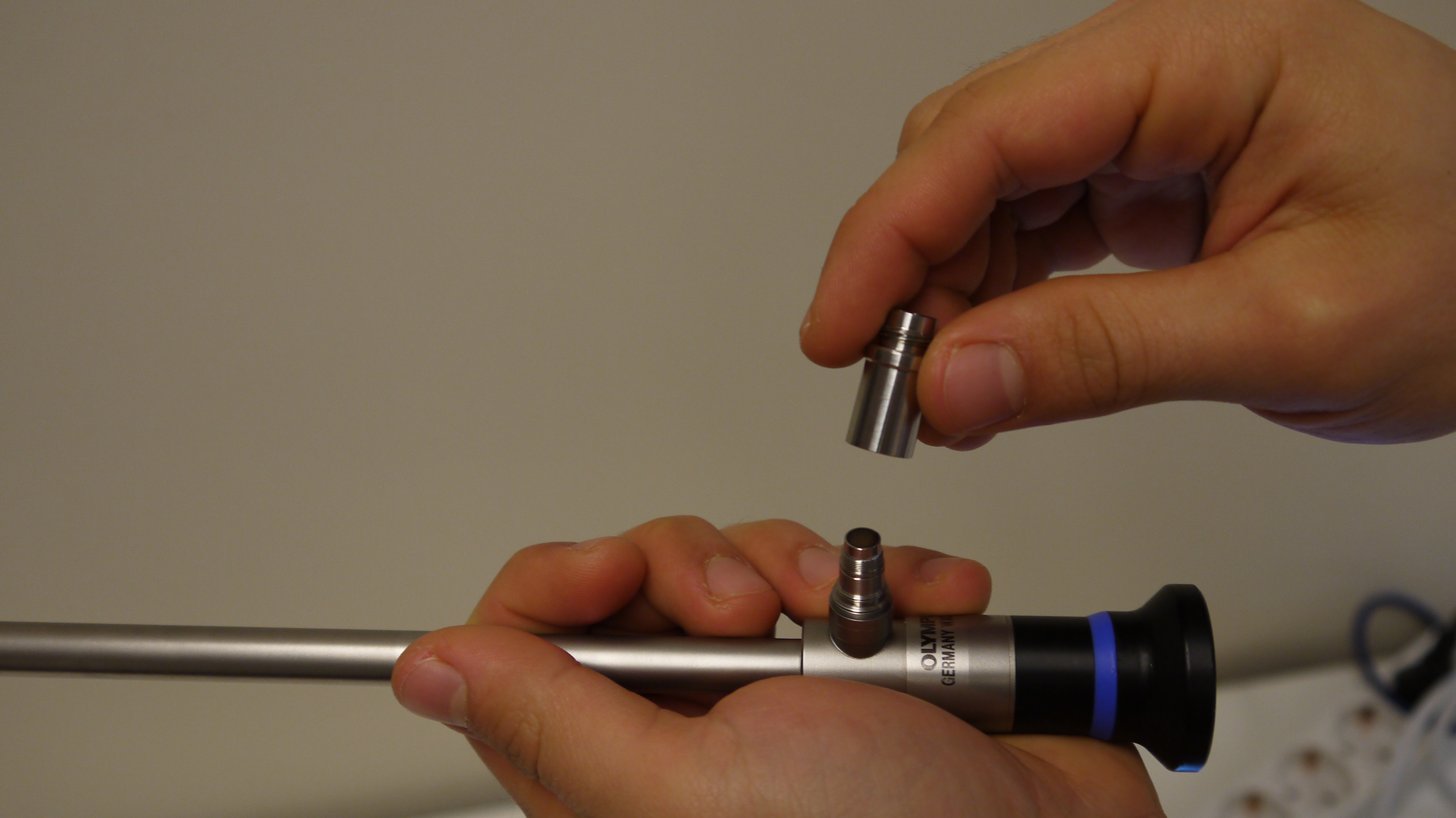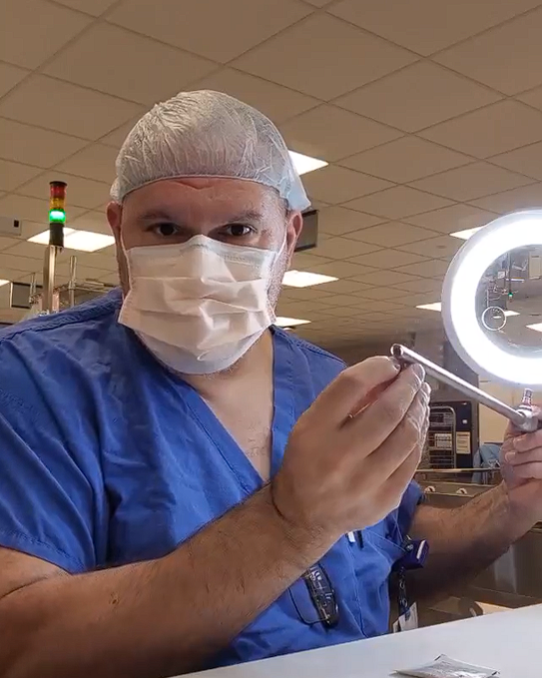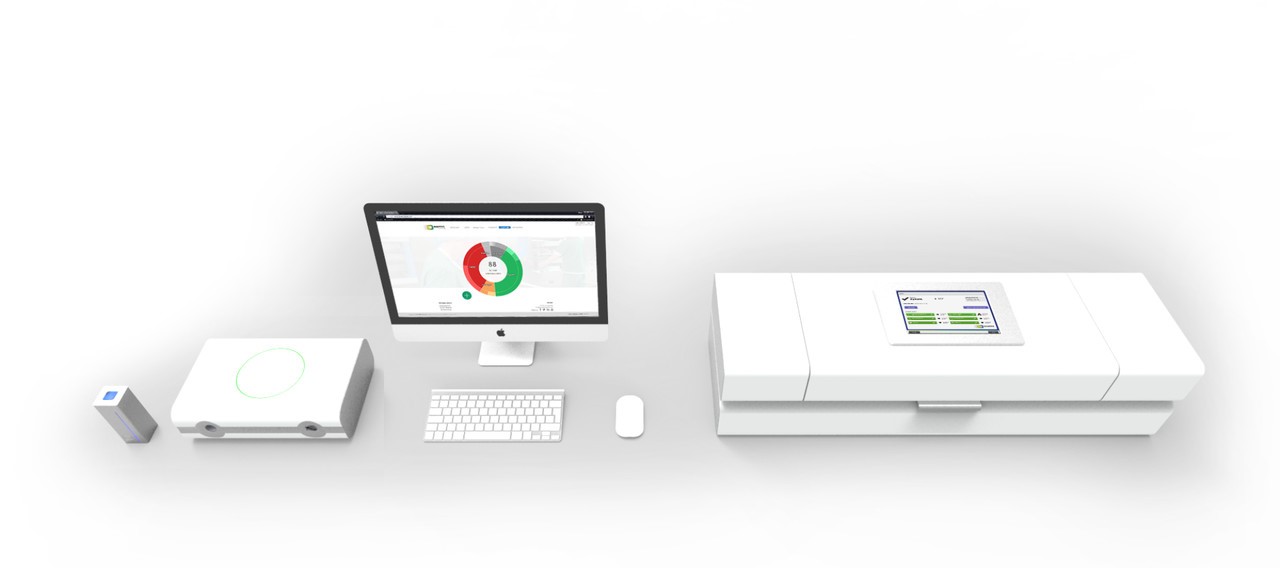Want to Record your Endoscope Image Quality?
If you want to check your endoscope image quality then you came to the right spot!
But what is endoscope image quality? And how do you measure it?
“Although providing the best possible patient care is our most important goal, we are poorly equipped to measure our ability to achieve that goal.” Bjorkman and Popp
What can go wrong?
There are several ways to measure endoscope image quality and several tools to do it.
If you look at an endoscope in more detail you’ll discover that an endoscope exists of a lot of components like rod lenses, sapphire windows, glass fibers, objectives etc.
All these components make up the signature of the endoscope, so it's not that simple to just do 1 measurement to discover the possible defects of an endoscope.
You’ll have to measure more aspects in order to get a clear picture!
The estimated lifetime of an endoscope is about 1 minute to 2 years.
Yes, we have seen older endoscopes but trust us, it doesn’t get better over time..
About endoscopes
Endoscopes are built in a way to cope with the extreme heat that an autoclave works on (around 135 °C).
To let lenses expand and contract, they are kept in place with a coil spring that holds them in position. But during expanding and contracting the spacers between the rod lenses scratches the surface of the rod lenses and causes glass dust to sit on top of the rod lens surfaces.
Also, transporting endoscopes has the same effect. A little bit of dust is common, but where do you draw the line? When does this have a negative effect on the endoscope image quality?

Rod lenses are often glued. This might strike you as strange, but in fact, the cheapest way to make a rod lense is to take a glass rod and glue a lens on top of it.
The better way is to polish the surface of the rod to get a lens.
But again, due to the temperature of the autoclave the glue has a tendency to age quickly and turn yellow. Eventually it will lose its adhesive function and the lens will come loose. So how do you measure this? And again, where do you draw the line?
The better way is to polish the surface of the rod to get a lens.
But again, due to the temperature of the autoclave the glue has a tendency to age quickly and turn yellow. Eventually it will lose its adhesive function and the lens will come loose. So how do you measure this? And again, where do you draw the line?
When people talk about endoscope image quality they usually only speak about focus, image sharpness of for the more technical people, MTF.
Basically, it’s the ability of a lens system to reproduce the image. The better, the less distortion and the more contrast or resolution you’ll get.
Testing Endoscope Image Quality
Dovideq is all about “Testing Endoscope Image Quality” and this device does an amazing job. I just explained about the coil spring and how it keeps the lenses in place. To influence focus just drop the endoscope on its eyepiece and you have a completely different outcome.
And because endoscopes are used every day we recommend to check them every day.
And because endoscopes are used every day we recommend to check them every day.
Then there are the light fibers in a rigid endoscope. This is also a popular subject in hospitals.
Fibers that are burned out, broken or residue that sticks into the light post.
When in use, endoscopes are subjected to mishandling and the cleaning treatment is not very “friendly” to the quality. Day-to-day use affects the overall working of the endoscope and it's hard to tell when it drops below the threshold of acceptance. It's impossible for a human to detect a gradual pattern in any way.
How do we measure it?
Now, you might want to suggest to not use the autoclave anymore and go plasma all the way.
I don’t want to spoil the party, but this method is also very aggressive on plastics and glues etc. and there are even manufacturers of endoscope that do not recommend you to use this method.
I don’t want to spoil the party, but this method is also very aggressive on plastics and glues etc. and there are even manufacturers of endoscope that do not recommend you to use this method.

Dovideq made just the right tool that gives you all the possibilities to monitor your endoscopes over time and is backed up by a cloud platform that gives you all the data, reporting and tools to make sure you’ll never have a defective endoscope in the OR anymore.
This tool does not only test the endoscope image quality, but also tests discoloration, dust particles and measures the view angle and field of view.
It is designed to fit right into the workflow of the CSSD/SPD to record your endoscope quality and tells you immediately when to take action.
Recently we came across an article that said:
“The path to quality improvement naturally begins with an effort to define those aspects of care that impact the quality of the patient experience”
This is how we took the challenge to build ScopeControl and LightControl; we first looked at the how the end user wanted to solve the problem and then we determined how to measure it technically.
We knew that endoscope specifications were not something you can download over the internet. This problem forced us to build a new database that spoke another language that did not hurt the manufacturer's specifications.
We wanted to learn from measuring endoscopes and we want our users to learn from each other!
This is why we can connect every ScopeControl to the EndoscopeManager platform to exchange data and do analysis on this data to give back evidence based values that helps everybody in the industry.
We also did studies with UMCU (Universitair Medisch Centrum Utrecht, the Netherlands) to find a set of thresholds to reject endoscopes from further use in OR.
And we are not stopping, every new user that buys ScopeControl or LightControl benefits of the work that other hospitals have done already in the past, and with using it they are helping each other to make endoscopic surgery safer and cost friendly.
So what can I do?
You can start testing your endoscopes today and help reduce the delay in OR caused by defective endoscopes. It’s that simple.
References:




